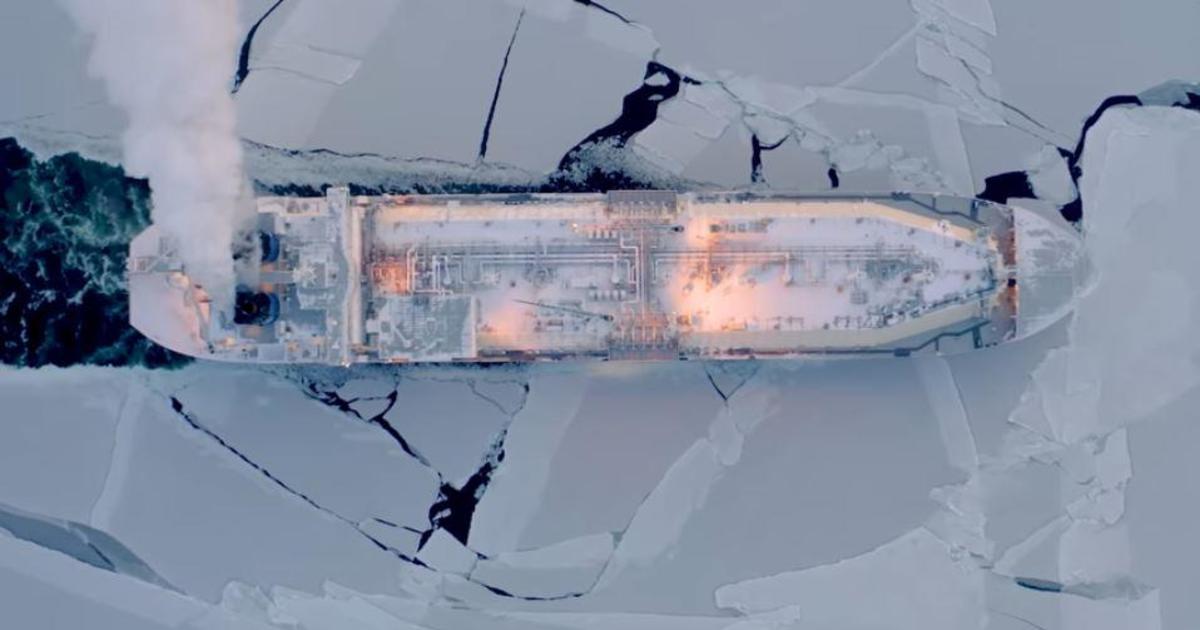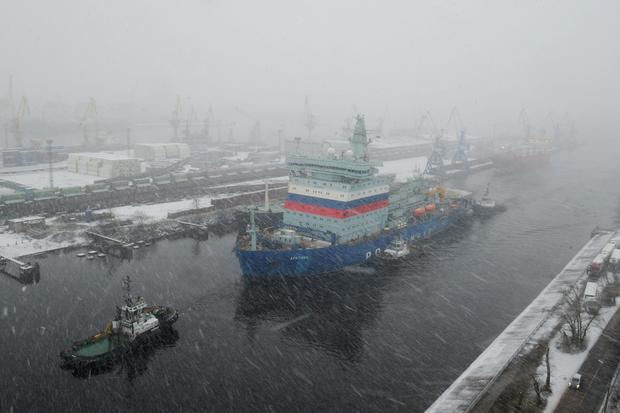
Moscow – A Russian natural gas tanker has completed an experimental tour of the Northern Sea Route – the first time the Arctic path has been forged at this time of year. The journey of Christophe de Margerie’s tanker through the ice is the latest visual indicator of the climate change in the vulnerable region
The tanker, run by the shipping company Sovcomflot, returned to the remote Russian gas terminal in Sabetta on February 19, bringing Russia one step closer to its goal of achieving year-round commercial navigation through the warming Arctic.
The LNG (liquefied natural gas) tanker departed from China’s Jiangsu port on January 27 after delivering its cargo. It entered the Northern Sea Route, which traverses Russia’s north coast, a few days later near Cape Dezhnev, where it was met by the Russian nuclear icebreaker 50 Let Pobedy (50 years of victory). Together they completed the 2,500 nautical mile journey through the ice in 11 days and 10 hours.
The ship managed to complete the first leg of its journey from Russia to China without an icebreaker. Both voyages broke winter navigation records due to the changing climate in the Arctic allowing passage through thinner ice. Using the Northern Sea Route, shippers in Russia and other countries can avoid a much longer southern journey through Europe, the Middle East and all of South Asia, saving millions of dollars.
The deepest ice the ships encountered was about five feet thick. However, the ships did not experience a multi-year accumulation of old ice on the route, and meteorologist and journalist Eric Holthaus called that a clear indicator of “a climate emergency”.
Last May, the Christophe de Margerie became the first large-capacity freighter to complete an eastbound transit of the Northern Sea Route, two months earlier in the year than the traditional voyage.
Sovcomflot
“As a result of the early Northern Sea Route (NSR) voyage that Christophe de Margerie completed in May 2020, as well as the current NSR voyage, navigation in the eastern part of the North Pole was practically doubled,” said Sovcomflot CEO Igor Tonkovidov. earlier this month. He noted that the transit route along that portion of the NSR had been blocked by ice for decades from November to July.
“The North Pole is ours”
Novatek, the company that operates the Sabetta LNG gas plant, plans to continue experimental voyages eastward along the Northern Sea Route, with the next scheduled for this spring, Russian business newspaper Kommersant quoted the company’s boss.
European University in St. Petersburg
Last year, Russia moved nearly 33 million tons of cargo along the Northern Sea Route, including more than 18 million tons of LNG. Freight traffic along the NSR has almost quintupled in the past five years alone.
“The route can handle much more than that,” Russian Deputy Prime Minister Yury Trutnev said at a government meeting last week. He said that according to a decree by President Vladimir Putin, freight traffic along the NSR should increase to 80 million tons per year by 2024.
“One way to achieve that goal is to extend the period of Arctic navigation,” Trutnev said.
To help it achieve its lucrative Arctic ambitions, Russia has revamped its unique civilian fleet of nuclear-powered icebreakers. Last year Russia unveiled that fleet’s new flagship, the Arktika, said to be the world’s largest and most powerful.
OLGA MALTSEVA / AFP / Getty
“The Russian Arctic attracts many interested in its riches,” said St. Petersburg Governor Georgy Poltavchenko at the launch ceremony. “But the North Pole is ours, and we’ve proven it.”
Russia plans to launch two more ships in the same series by the end of 2022.
Environmentalists have voiced concerns about the growing presence of nuclear power in the sensitive Arctic, and it is already plagued by problems related to climate change
Some estimates suggest that the Arctic has oil and gas reserves equal to 412 billion barrels of oil, about 22% of the world’s undiscovered oil and gas.


